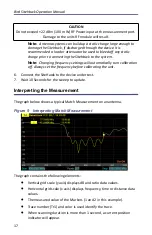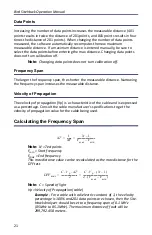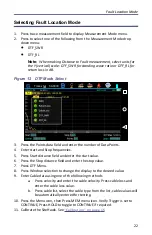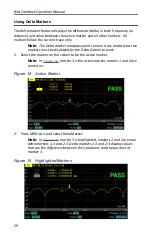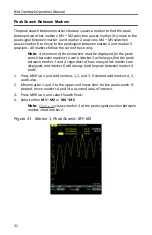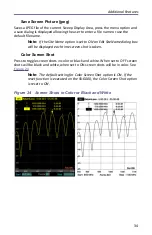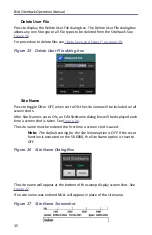
20
Chapter 4
Fault Location Mode
Fault location identifies the position of impedance discontinuities (reflections)
within the antenna system. The measurement results are displayed on an x-y
graph. Distance from the SiteHawk Analyzer is shown on the x-axis, while
relative magnitude of the discontinuity is shown on the y-axis.
Before making a fault location measurement, ensure that the following items
and information are present:
Calibration Combination (Cal Combo) calibration unit
All necessary cables and adapters of the correct size and connector
type
The velocity of propagation for the cable type being measured (obtain
from the cable manufacturer)
Number of data points to use in making the distance to fault
measurement (user choice)
Frequency Span and Max Distance
Frequency span, the velocity of propagation of the cable (Vp) and the number of
measured data points determine the maximum distance tested during fault
location test.
Max Distance
The maximum measurable distance can be calculated by SiteHawk based on the
specified frequency span, or the maximum distance can be entered manually
instead of entering the frequency span. If the maximum distance being
measured is entered instead of the frequency span; the SiteHawk calculates the
frequency span.
If a maximum distance is manually entered, select the data points before
entering the max distance.
Note:
Changing the frequency span or the max distance will
automatically turn calibration off. Always set the frequency span or
max distance before calibrating the unit.
Note:
If a maximum distance less than the total length of the cable
system is selected, the trace will not show the end of the cable system
(antenna). To display the full cable system always set the maximum
distance to a value that is a few feet or meters greater than the entire
length of the cable system.












